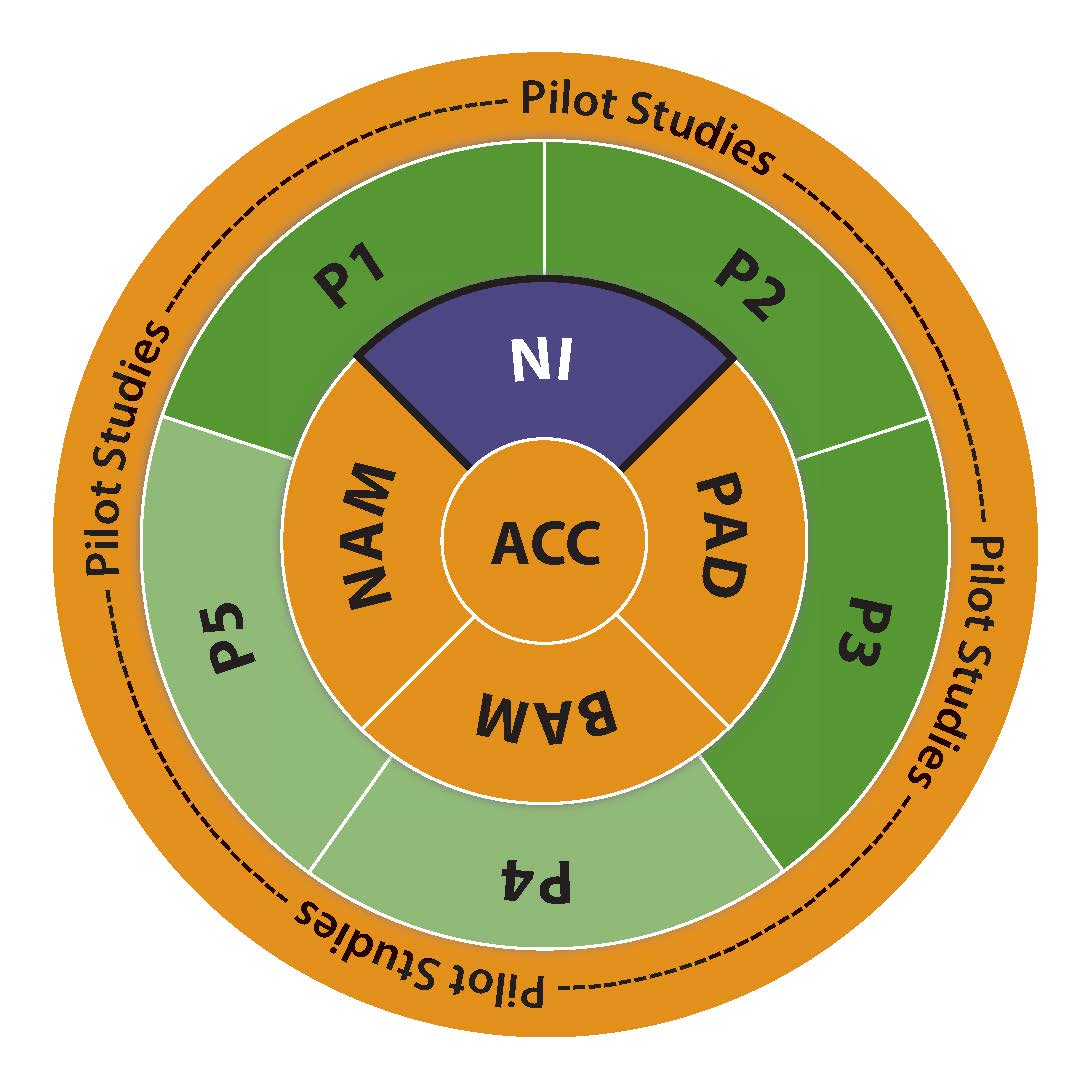Neuroimaging (NI) Core
Core Director: Gregory Brown, Ph.D.
Co-Investigators: Thomas Liu, Ph.D.; Miriam Scadeng, Ph.D.; Christine Fennema-Notestine, Ph.D.; Sarah Archibald, M.A.; John Hesselink, M.D.; M.J. Meloy, Ph.D., Craig E.L. Stark, Ph.D. (UC Irvine)

Summary:
Given the adverse effects of HIV infection and METH use on brain structure and function, their combined effects, whether additive or synergistic, would be expected to produce a significant brain disorder. Moreover, as treatment of HIV infection has improved longevity and as the large cohort of METH users age, brain changes related to aging and to the comorbidities of aging are likely to contribute to HIV+ and METH+ related alterations in brain structure and function. In particular, age-related cerebrovascular disease might alter cerebral blood flow (CBF), potentiate white matter changes, and alter gray matter volume. Aging is also likely to exacerbate changes in brain connectivity expected from white matter changes associated with HIV+ and METH+. Whether the aging contribution to changes of brain structure and function is additive or synergistic to that expected from HIV infection or METH use are unknown. This Core has proposed to use translational multi-modal imaging to support investigations into the extent to which aging mediates brain changes associated with HIV infection, METH dependence, and their interaction.
To support these investigations the NI Core Resource Objectives are to:
- Provide TMARC Investigators with a core set of human and mouse imaging data
- Provide specialized imaging protocols and advanced image analysis tools to support new directions in emerging imaging technologies
- Train investigators in imaging methods.
The NI Core Scientific Objectives are to:
- Investigate the separate and joint brain abnormalities underlying the neuropsychological and functional disabilities of patients with HIV infection and METH use and their interaction with aging
- Use multimodal imaging methods to link white matter changes seen in METH use and HIV infection to alterations of functional connections among brain centers
- Use magnetic resonance imaging (MRI) protocols comparable to those used in human studies to link human imaging findings to imaging findings in mouse models of HIV infection and METH use.
Relevance:
To understand the combined effects of METH, HIV, and aging on brain injury, the NI Core provides advanced brain imaging methods and imaging analysis tools. Animal models of METH, HIV, and aging are also imaged to better understand the mechanisms of the associated brain injury and how this injury may be prevented or treated.
